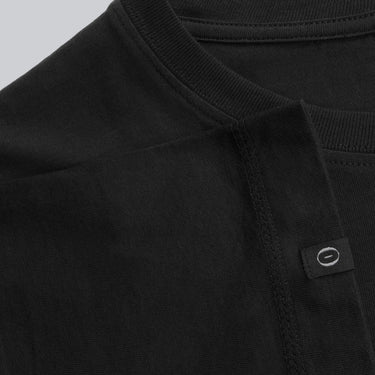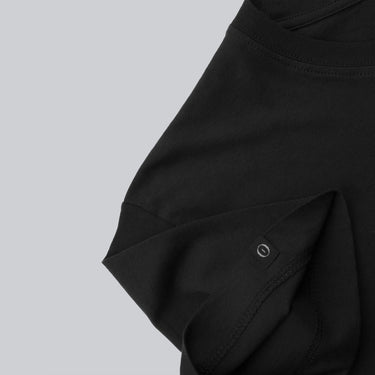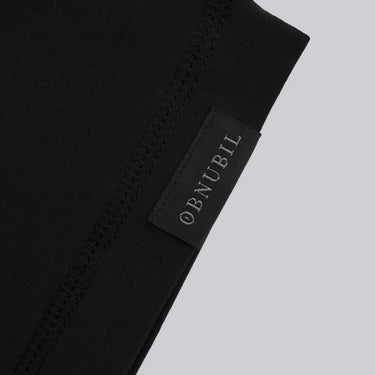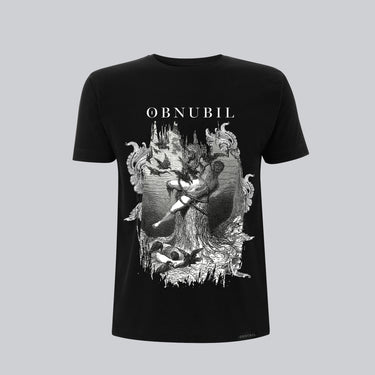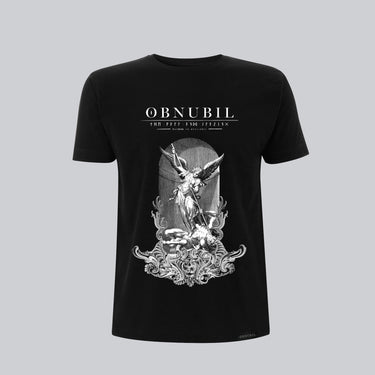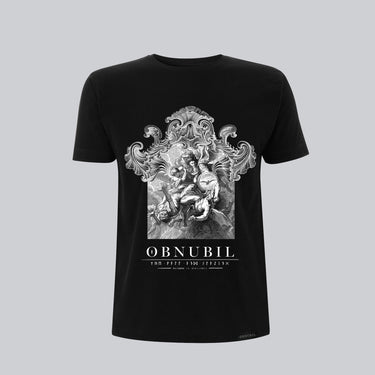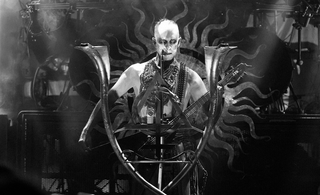
Inferno Festival 2025
Day 4: The Final Descent into Darkness. Into the Abyss, my Immersion in Norway’s Dark Soundscape.
The final day of Inferno Festival 2025 arrived with a bittersweet edge. After three intense days immersed in blackened riffs, chaotic blasts, and vibrant underground culture, the looming thought that it was all coming to an end lingered in the air. But there was still plenty of fire left before the curtain closed.
Just like the day before, I began prepping my gear and heading down for breakfast at The Hub. But today, I was feeling the full weight of exhaustion after several intense days of very little sleep, constant movement, and hauling camera gear around. I absolutely devoured the breakfast buffet to try and recharge, and downed four coffees in a row just to function. Still, it was a lovely start to the day, sharing breakfast with Jeremy Saffer and his girlfriend Tara. Even something as simple as breakfast feels different at Inferno compared to other festivals—there’s a sense of closeness, of shared experience. Sitting a few tables over from Nergal from Behemoth while sipping your morning coffee isn’t something that happens every day, and it’s just another reminder of how unique and community-driven this festival truly is.
Before heading over to Rockefeller, I made a quick stop at Gunders Records space on the first floor of The Hub—a true treasure trove for collectors and music lovers alike. There were around 4,000 items for sale, including vinyl records, CDs, box sets, and cassette tapes, spanning everything from underground obscurities to iconic releases. The selection was massive, and the atmosphere was one of focused digging and discovery. In addition to the music, they also had a ton of band T-shirts, ranging from vintage 90s prints to more recent designs—each one a piece of metal history in itself. It felt like stepping into a curated archive of decades of extreme music culture.


As the afternoon gave way to evening, I returned once again to Rockefeller, the heart of the festival’s main stage. On the way, I ran into Allan Larsen, Danish tattoo artist and talented photographer now based in Berlin. We took a short break to grab a coffee together, sharing a few laughs before heading toward the venue. But as we arrived, I suddenly realized—with horror—that I had forgotten my photo pass back in the hotel room. What followed was an impromptu marathon sprint through Oslo, rushing back to retrieve it and racing against the clock to make it back in time. Somehow, I did—and just barely. At 16:30, Danish symphonic black metallers Lamentari opened the evening’s cascade of chaos. Though still relatively young as a band, Lamentari have already carved out a name for themselves with a powerful blend of orchestral grandeur and feral black metal ferocity. Their performance at Inferno was a testament to that duality—sweeping string arrangements and cinematic atmospheres collided with blast beats and throat-tearing vocals, conjuring an apocalyptic soundscape that immediately captured the crowd’s attention. It was theatrical yet razor-sharp, elegant but absolutely unforgiving.
At 17:15, I headed downstairs to John Dee to catch the set of Thus, a rising name in the Norwegian black metal scene. Their sound was sharp, tightly executed, and dripping with icy atmosphere, channeling a modern take on traditional black metal with just the right amount of experimental edge. Their performance had a gripping energy—intense, yet precise—showcasing the band's growing confidence and unique identity within the genre. Despite the intimate size of the venue, the room filled quickly with curious festivalgoers, and I was glad I made it in time to experience their raw, compelling set.
Then, as the tension thickened, Schammasch took Rockefeller at 18:00. Hailing from Switzerland and known for their avant-garde take on black and post-metal, Schammasch delivered what can only be described as a ritual rather than a performance. With slow-burning intensity and meticulous layering, their set unfolded like a liturgy of darkness—each song a meditative plunge into the abyss. They turned Rockefeller into a cathedral of shadows. After their show, as planned beforehand, we did a little photo shooting. We didn’t have much time, since I also needed to be back in the main hall soon, but we managed to capture some nice shots before parting ways. It was also very nice to finally meet them in person and exchange a few words in German—something that added a personal and warm touch to the whole experience.
At 18:45, I went down to John Dee again for Nattverd, a band that truly embodies the sinister spirit of Norwegian black metal. Cloaked in a cold, aggressive sound and a no-frills aesthetic, their performance was unrelenting from the first note—raw, fast, and steeped in the icy darkness of the second wave tradition. The atmosphere in the venue grew noticeably more intense, with fog and harsh lighting amplifying the oppressive energy on stage. Nattverd’s presence felt menacing and authentic, like a blast from a darker past—but sharpened for the present. It was one of those shows where you could feel the floor vibrate beneath your feet, not just from the volume, but from the weight of the music's conviction.
Sweden’s Naglfar took command of the main stage at 19:30, bringing with them a tidal wave of fury and precision. Veterans of the melodic black metal scene, the band formed in the early '90s and have long stood as pillars of Sweden’s more aggressive and polished take on the genre. Their performance at Inferno was a masterclass in controlled chaos—razor-sharp riffs, relentless drumming, and an unholy atmosphere that reminded everyone just how potent Swedish black metal can be when delivered with such surgical intensity. Every song felt like a sharpened blade, cutting through the air with chilling efficiency and undeniable power.
I headed down once again at 20:30 to John Dee—by now, a familiar descent—for Bythos, a Finnish band known for their mystical blend of black metal and dark, atmospheric elements. Their sound was drenched in occult symbolism and carried a haunting melodic undercurrent that made their set feel almost ritualistic. Cloaked figures, dim lights, and a brooding presence set the tone as they unleashed a wall of sound that was both aggressive and hypnotic. It was a performance that invited introspection as much as headbanging, weaving melody and menace with seamless precision.
The atmosphere at Rockefeller grew darker and more menacing as Norway’s own Tsjuder took the stage, erupting into a relentless assault of raw, old-school black metal fury. By 21:15, their signature blend of speed, aggression, and icy riffs had the crowd fully locked in, delivering one of the most intense performances of the night. Known for their raw, unrelenting approach to black metal—stripped of frills and soaked in aggression—Tsjuder unleashed a primitive, feral energy that tore through the venue like a storm. Where Naglfar had showcased razor-sharp precision and melodic violence, Tsjuder offered something far more primal: pure, untamed darkness. Their set was a visceral reminder of the genre’s roots—cold, chaotic, and absolutely merciless. It didn’t ask for your attention; it seized it and never let go, dragging the audience into a maelstrom of riffs, shrieks, and unholy atmosphere.
For those who remember, Tsjuder had previously performed a special Bathory tribute at Inferno back in 2018, joined by original Bathory bassist Frederick Melander—a historic performance that left a lasting mark on the festival’s legacy. This year, they returned with an even more powerful homage to Bathory, reinforcing their deep connection to the roots of black metal and closing their set with a thunderous nod to one of the genre’s founding spirits.
This was the one show I had been looking forward to the most during the whole festival—not only because of the music, but also because it was the only performance where, after all the photographers left the photo pit, the space became mine. As agreed upon beforehand with the band, I was there to work on both photo and video, and after the set, we also managed a quick backstage photo shoot. I enjoyed every single minute in that pit like a little girl, completely immersed in the moment, and honestly felt honored to be there.
The photo shoot itself was a bit stressful, carried out under far-from-ideal conditions: barely any light, time pressure, and the backliners already moving gear off the stage. But, as always, I managed somehow. I was particularly excited to finally meet their drummer Emil Wiksten in person, with whom I’ve been in touch for some time and who helped arrange everything. An absolute gem of a person—kind, professional, and a total pleasure to talk and be with.
In the meanwhile, Celeste took the stage in total darkness, lit only by their signature red lights and strobe flashes, enveloping the room in their suffocating blend of black metal, sludge, and post-hardcore. I’ve seen them a few times before and know a couple of the members, this has been the only show at John Dee I missed today while being with Tsjuder. Despite their usual sonic and visual intensity, I guess there has been a bit of tension in the air this time—likely due to the recent backlash they received after announcing a tour in Russia, a decision that hasn’t been well received in light of the current political situation. Still, at 22:30, I guess they delivered the kind of fierce, all-consuming atmosphere that has made them a standout act in extreme music, even as they find themselves under scrutiny.
Here I want to take a moment to say thank you—especially to Runar Pettersen, the Press Officer, and Shea Kikonu, Chief Security Officer of the festival, whom I happened to already know from before. He was incredibly helpful and attentive throughout these past four days, always with a kind word and making sure things ran smoothly. The same goes for every single person I encountered from the Inferno crew—from security to the wonderful people behind the bars serving drinks tirelessly with a smile. This festival truly stands out not only for its lineup and atmosphere, but for the incredible team behind it. Without a doubt, Inferno has the best staff I’ve ever come across at any concert or festival.
Between shows I took one last slow walk through the entire tattoo fair and merch area. It was buzzing with life during all the time—tattoo machines still buzzing, artists showcasing their stunning work, and fans digging through records, patches, and exclusive festival gear. I made sure to check out all the amazing stands once more, including the fiery Inferno Hot Sauce booth, where Munnvold proudly presented the hottest sauce you can imagine—definitely made for the brave souls who enjoy setting their taste buds on fire (absolutely not my case).
And finally, as the witching hour drew near, the infernal curtain fell with Behemoth at 23:30. With flames, smoke, and apocalyptic grandeur, Nergal and his legion delivered a headlining set that was nothing short of spectacular. From the first guttural roar to the final infernal note, it was a perfectly calculated ritual of fire, sound, and dominion—a fitting, triumphant closing chapter to a night (and festival) that left no soul untouched. Their theatrical command and spiritual intensity transformed Rockefeller into a blasphemous altar, leaving everyone awestruck beneath their reign of darkness.
Just before the band began, I found myself waiting by the side of the stage next to Régis Nornagest Lant, lead vocalist and guitarist of the mighty Enthroned, and his wonderful other half, Patricia Brandvik. I have been running into them all weekend and was looking forward to it after being in touch for a very long time and conducting an interview with Régis last year — you can read the interview here. Sharing that moment with them added another special layer.
For the last few songs of Behemoth’s performance — where, by the way, almost every second track was accompanied by bursts of fire on stage — I put the camera away and simply soaked in the experience. I stood there, no lens between me and the chaos, just enjoying it for what it was. And I couldn’t have asked for better company to do so than together with Emil Wiksten, reconnecting again after the whirlwind of his own powerful performance earlier that evening.
As the final echoes of Behemoth's crushing set faded into the Oslo night, I stood amidst the crowd, overwhelmed—not just by the intensity of the performances, but by the entire experience. This wasn’t just another festival. Inferno was a world of its own—a gathering of souls bound by a love for darkness, for art, for sonic extremity. Over the course of these four days, I not only witnessed some of the most powerful live shows I’ve ever seen, but also connected with an incredible community: fellow travelers, passionate fans, and artists—both on stage and off—who welcomed me with warmth, curiosity, and genuine camaraderie. From the chaotic blasts at Rockefeller to the intimate venues tucked in Oslo's corners, every moment felt charged with purpose.
To have lived all of this in what was also my first journey to Norway—the final Scandinavian country I had yet to visit—made it even more meaningful. There’s something undeniably poetic about experiencing Norwegian black metal in its birthplace, surrounded by the culture and landscape that gave rise to it. Inferno didn’t just meet my expectations—it shattered them. I didn’t return to my hotel room after the final show—not even to write my daily review, for the first and only time during the festival. Instead, I spent the night in the most wonderful company, savoring every last minute of this journey. I didn’t sleep at all and went straight to the breakfast buffet at the hotel, coffee in hand, heart full, surrounded by people who had made this experience unforgettable. It was the perfect ending to a perfect trip.
Leaving the hotel and heading to the airport was one of the hardest and saddest moments I’ve experienced in a long time. But one thing is certain—I’ll be back. There’s no doubt in my mind. This festival isn’t just an event, it’s a homecoming, and it has carved out a permanent place in my soul.
(Visual content here: Obnubil Magazine or Obnubil.)




